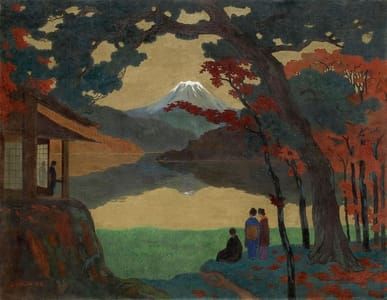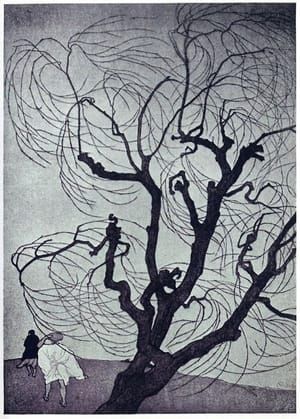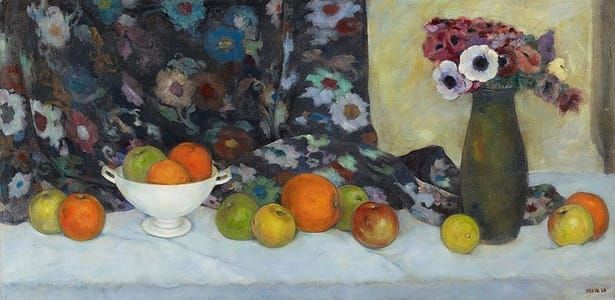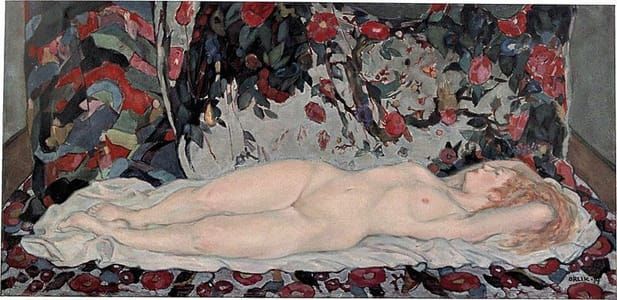

Japanese Garden, 1904
Emil Orlik
What strikes me about Emil Orlik's Japanese Garden is how like a Secessionist's dream it is, with not a cherry tree in sight. Orlik’s prominent placement of a flowering bush and seemingly random spray of blossoms at the forefront of the picture seem to have gravitated from a Klimt landscape. Every element in this picture belongs to an elaborate but apparently simple curve: the trees, the path, and the all-important horizon bend to the artist's design.
If any single image can encapsulate Orlik's aesthetic this could be it. Also, it shows how western artists rediscovered things like abstraction, the reality of the flat surface, and decoration as a value in itself, all of which had been suppressed in the drive to imitate reality - or at least how our eyes perceive it. (http://thebluelantern.blogspot.nl/2013/02/the-paradox-that-is-emil-orlik.html)
Uploaded on Feb 4, 2017 by Suzan Hamer
Emil Orlik
artistArthur
Wait what?











